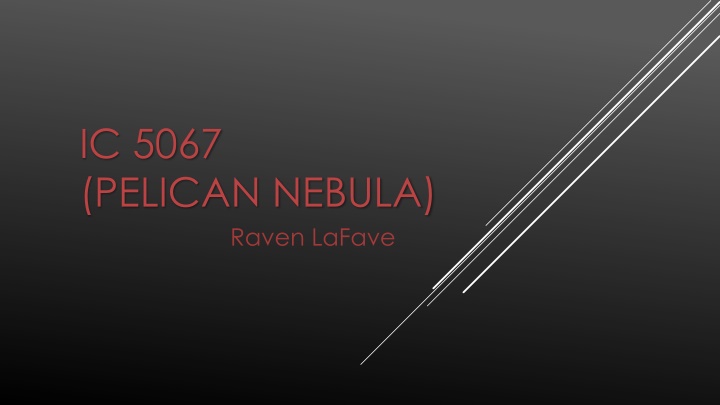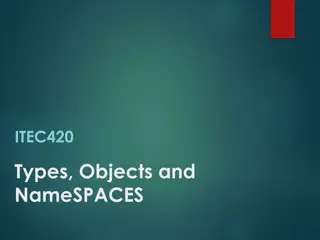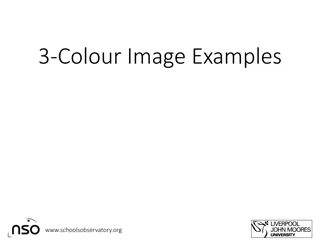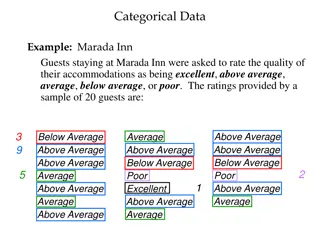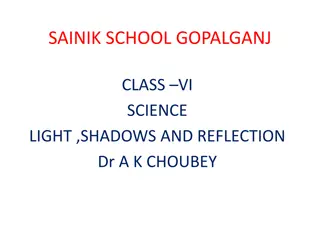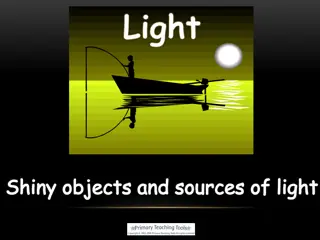IC 5067: The Pelican Nebula and Herbig-Haro Objects
Delve into the beauty and mysteries of IC 5067, the Pelican Nebula, located in the Cygnus constellation. Discover its unique features, including emission nebula jets emitted by Herbig-Haro object 555. Follow the imaging process using a Meade LX200 telescope and ST-9XE camera. Uncover the challenges faced in CCD calibration and see the stunning final image after processing in Photoshop.
Download Presentation

Please find below an Image/Link to download the presentation.
The content on the website is provided AS IS for your information and personal use only. It may not be sold, licensed, or shared on other websites without obtaining consent from the author.If you encounter any issues during the download, it is possible that the publisher has removed the file from their server.
You are allowed to download the files provided on this website for personal or commercial use, subject to the condition that they are used lawfully. All files are the property of their respective owners.
The content on the website is provided AS IS for your information and personal use only. It may not be sold, licensed, or shared on other websites without obtaining consent from the author.
E N D
Presentation Transcript
IC 5067 (PELICAN NEBULA) Raven LaFave
FACTS In the Pelican Nebula; Ridge following curve of head and neck Constellation: Cygnus ~1,900 light years away; 10 light years in diameter Northeast of Deneb Magnitude: 8.0-9.0 RA: 20h50m54s; Dec: +44 25 06 Emission Nebula Jets emitted: Herbig-Haro object 555 http://www.perseus.gr/Astro-DSO-IC-5070.htm
HERBIG-HARO OBJECTS Named after George Herbig and Guillermo Haro What are they? Pillars indicate a Protostar http://www.noao.edu/outreach/press/pr03/hh555.html
WHY WOULD I PICK SUCH AN OBJECT? 1st wanted to image M16 (Eagle Nebula) IC5067 was above the horizon! Detail http://www.phys.ncku.edu.tw/~astrolab/mirrors/apod/imag e/1406/m16_32block950.jpg
IMAGING Telescope: 12 Meade LX200 CCD: ST -9XE camera with RGB filters 10 flatfields in each filter and 10 flatdarks; both at .05 exposure 5 Dark Frames at 3min. Exposure 15 unfiltered; 10 of each filter (BGR); all at 3min. exposures
CCD SOFT Masterdark Masterflat: PROBLEM! Calibrate Align Combine
Unfiltered Median Green Add Red Add Blue Add
PHOTOSHOP Levels Curves Saturation Flatten MORE levels/curves/saturation
SOURCES http://www.noao.edu/outreach/press/pr03/pr0308.html http://astronomy.swin.edu.au/cosmos/E/Emission+Nebul a http://annesastronomynews.com/photo-gallery- ii/nebulae-clouds/hh-555/ http://www.perseus.gr/Astro-DSO-IC-5067.htm http://apod.nasa.gov/apod/ap130822.html
